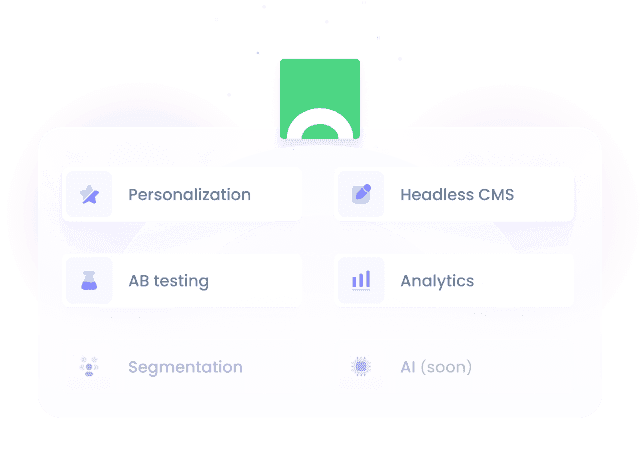Croct vs. analytics platforms: understanding the differences
If you've ever compared the number of unique users in GA4, Amplitude, Mixpanel, or any analytics platform with the number of active users in Croct, you've probably noticed a difference between them.
This difference is entirely expected and can be caused by a number of factors. Each platform has a different way of identifying and counting users, and this directly influences the results you see in the reports.
How analytics platforms identify users
In the vast majority of analytics platforms, identification is done by combining different sources of information, following a hierarchy of priority.
Let's use GA4 as an example. In it, there is a so-called combined mode, where Google analyzes identifying data based on 3 factors, in this order:
-
User ID
It's a unique, first-party identifier generated by the website itself for each logged-in user. With this identifier, GA4 unifies sessions and events, even if the user changes devices or browsers.
-
Device ID
It is a random identifier associated with the user's browser, used for anonymous visitors. On the web, it is stored in the third-party cookie _ga, while in the app, it is the first-party cookie app_instance_id generated by Firebase. If the user clears cookies or reinstalls the app, the ID changes.
-
Machine learning models
When GA4 can't track a user, which can happen if cookies aren't accepted, it estimates behavior based on tracked user patterns and attempts to infer the user's identity. It's important to remember that it does not identify the user individually, only projects metrics.
How Croct identifies users
A Croct uses two main forms of identification:
-
User ID
This is similar to GA4's user ID, a unique identifier generated by the website itself that unifies sessions and devices. When this ID is not provided, we treat users as anonymous visitors.
-
Client ID
It is equivalent to GA4's device ID, but without using third-party cookies. By default, Croct's SDK persists this ID using the browser's session storage or local storage, but we also offer the option of using first-party cookies if necessary.
Why having 3 platforms for content management, AB testing, and personalization when you can have a single one?

Where differences are born
There are a few reasons why user counts don't match between analytics platforms and Croct.
Logged in vs. anonymous users
On both Croct and other platforms, if your application uses a user ID, a given user logging in on both desktop and mobile they will be recognized and counted only once. If there is a discrepancy between this configuration on the platforms, you may see discrepancies in the data.
Privacy policies and ID resets
In some browsers, such as Safari, the Croct's client ID may expire in 7 days if the implementation does not use the first-party cookie. In this case, a new ID is generated every 7 days, doubling the count of returning anonymous users.
GA4 modeling
GA4 can infer data from users who have not consented to the collection, creating estimates that may generate small variations or even retroactive changes in already closed periods.
Website areas
In both cases, both Croct and the analytics platforms generate events and count users on the pages where they are implemented. Therefore, if both are implemented in different areas, there will be discrepancies in user volume (for example, GA4 may be implemented on both the website and the blog, while Croct may only be implemented on the website).
Server-side implementation
Analytics platforms are typically implemented only on the client side, meaning they are activated only when the browser loads a page. Croct, on the other hand, can be implemented on both the client and server sides. With the growth of LLM models indexing the web, we've seen a significant increase in bots that make server-side content requests but don't actually load the page on the client-side.
Last year, we released a feature that introduced a filter so that requests from known bots are filtered out and do not impact session or active user counts. However, it's important to highlight that unknown bots can still impact your data.
Wrapping up
Croct and analytics platforms have different goals. Croct records users directly and accurately based on behavior observed on the server side, in the browser, or at login, while analytics platforms seek a broader, more unified view, even using modeling to fill in the gaps.
That's why differences in numbers do not mean there is an error, but rather that each tool uses different methods to measure the same thing.
Still unsure about the source of the discrepancies and need help delving deeper into the topic? Contact our support team, we'll be happy to help.